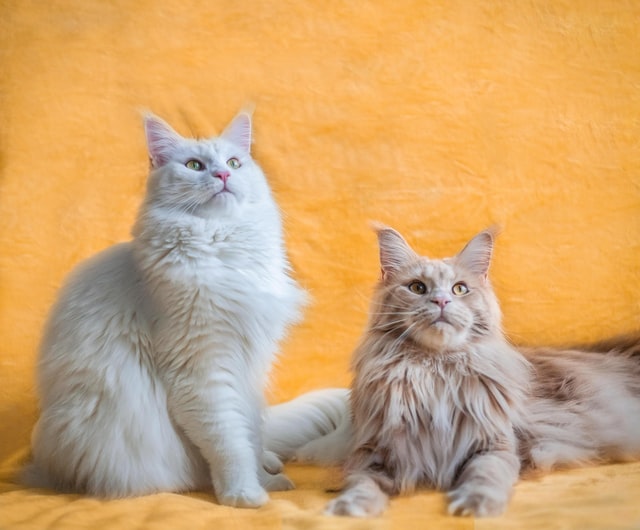FREE SHIPPING ON ALL US ORDERS
FREE SHIPPING ON ALL US ORDERS
For centuries, people have wondered how cats communicate with each other. Scientists have debated and researched the topic for decades. Cats communicate in various ways; these include visual clues, vocalizations, chemical cues, and physical contact.
Dogs, on the other hand, tend to communicate via stronger signals. Cats have subtle features, so it is harder to observe cat’s communication. If you close your eyes for a split second – you might miss a cat’s communication message.
If you want to understand how cats interact, you must learn to read body language.
In this article, we will help you to understand this!
Physical clues are often the best way to understand what your cat is trying to say. You should pay attention to the ears, the tail, the eyes, and the cat’s body posture. If the cat is confident and friendly – it will raise its tail in the air, its body will be tall, and the cat will turn its ears forward.
If your cat likes another cat, the cat will approach the cat with the tail crooked forward. Moreover, if the cat is happy with another cat’s presence – cats often roll over to show their belly.
That means the cat is happy and comfortable enough to show the other cat its most valuable part. However, if a cat is uncomfortable with another cat, it will crouch down, tuck its tail in, and take some time to observe the other cat’s actions.
Furthermore, if the cat feels in some way threatened, they often show aggression. Signs of aggression include growling, hissing, and arching their backs. Also, when many cats are agitated – they will lash their tails from one side to another.
Cats use the meow sound to greet each other. However, research shows that cats make louder meow sounds when approaching humans. In fact, cats use the meow sound far less with other cats. Researchers believe that cats use a care-soliciting vocalization when they direct it towards people.
Nonetheless, cats also use purring to communicate when inhaling and exhaling. Cats will sometimes use purring to communicate with other cats and sometimes with humans and other animals. Although many humans believe cats purr when they are happy – sometimes it means the opposite. But, cat purring is complex and requires a lot more studying.
Cats growl when they feel fearful, and at times they will hiss at other cats to tell them to stay away. Furthermore, it shouldn’t surprise you if you hear cats howling if they are distressed and scared. Cats will spit, snarl, and yowl before an attack on another cat or animal.
Cats are often incredibly social animals who greet each other with nose touches. Plus, cats tend to show affection by rubbings their heads together with other cats. It isn’t unusual to see cats hooking their tails together as a sign of love.
Also, it is unusual to see cats rubbing their back together. Instead, most cats prefer it if you touch their heads or sides. Some cats dislike it if you feel their backs and get angry if you stroke them along their backs.
When cats put their body on other objects and other cats, they release oil and pheromones from their scent glands. You can find the scent glands on a cat’s chins, cheeks, and foreheads.
Furthermore, cats will spray their urine to make territory. And it isn’t unusual to observe this in acts who live outdoors. Sometimes cats will spray their urine indoors, but it is uncommon and often a sign that the cat is stressed or there’s another cat outside of your house.
Cats are incredible animals, and with careful observation, you can understand how these unique creatures communicate.
If you enjoyed this article, you can also check out these helpful blogs.
How To Train Your French Bulldog To Sit
Top 6 Most Common Mistakes Dog Owners Make
6 Tips For Picking The Right Pet Food
